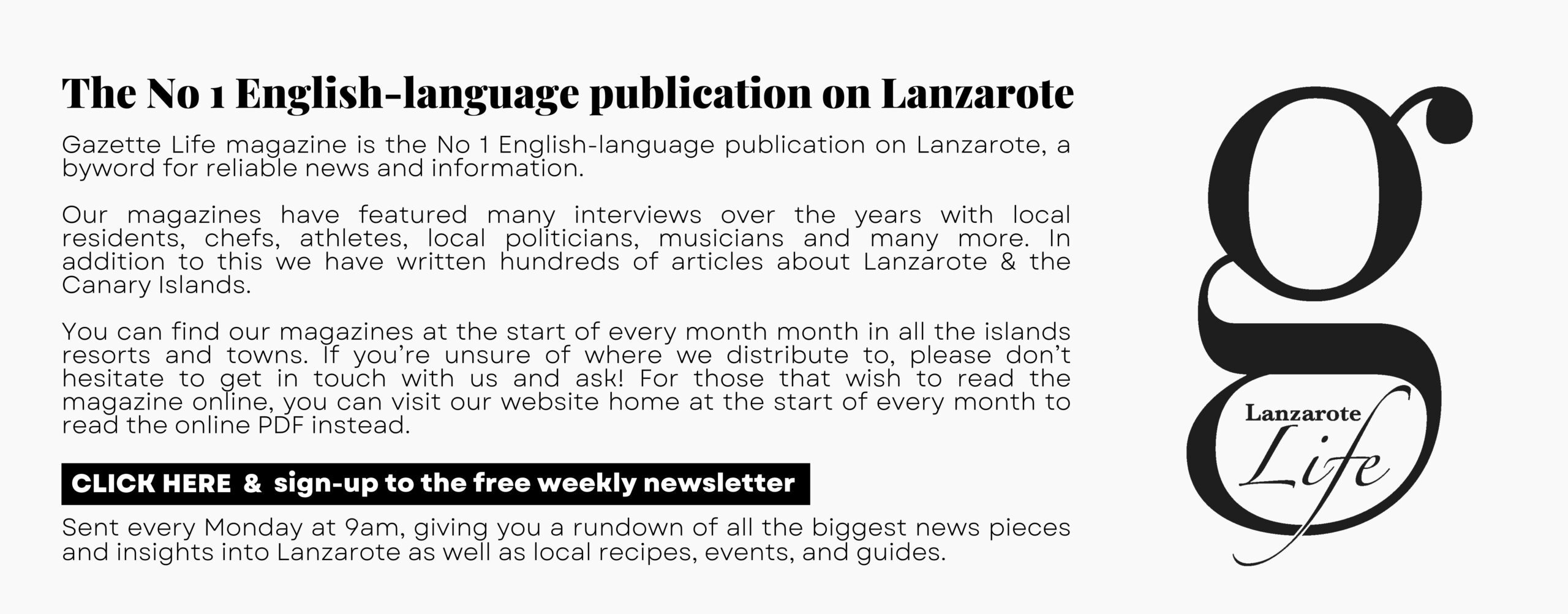Tour guide David Penney and his gang visit the Barranco de Elvira Sánchez in Haría to get an eyeful of the amazing flower show that transforms Lanzarote in the first part of the year.
Barranco is the Spanish word for a ravine or gully that channels rainwater downhill. On a dry island such as Lanzarote, these places can be an oasis of life in a barren, dry landscape, but they’re never more marvellous than they are right now.
After parking in the centre of Haría (there is a big public car park behind the square), we set off walking along Calle Cesar Manrique, where I pointed out that dozens of the older properties have a bucket mounted over their aljibe (water tank). The barranco was a key part of their lives as the rain water ran down from the hills and replenished the aljibes regularly, there is a big communal aljibe opposite the Ayuntamiento building also.
We pass by some nice properties including the Casa Museo de Cesar Manrique, which was the private home of the famous man and the place he was living up until the day of his death. The road takes us up past the school and sports centre and then quickly becomes a farmer’s track.
Very soon, we leave the town behind us and find ourselves surrounded by spectacular fields of grass and wildflowers, which have given a particularly magnificent display this year after several days of rain showers. This is why we chose this month to enjoy this area, and it certainly has been worth waiting for, with an above average amount of greenery and flowers.
I often hear some local people comment that “The rain is welcomed by the farmers and not welcomed by the tourists.” Well, I only wish that more tourists could get to see this side of Lanzarote. So many are only here in the summer, when the land is almost barren and dried-out by the winds and the sun, and they miss out on this, the real Lanzarote.
I have been walking in this area several times recently. I enjoy hearing that it is more like Ireland than Lanzarote and I warmly smile as it reminds me of the Scottish Highlands where I was living 16 years ago.
Watch out for loose rocks on the bed of the barranco. The ravine can become a torrent during heavy showers, and this can displace rocks, meaning they could give way beneath your feet.
Agave plants are on both sides, and you will see places where the plant has been cut back a wee bit by walkers to avoid the spikes, which are like sharp steel pins. Nevertheless, this is a plant you don’t want to get too close to, so take care.
There is an abundance of wild fennel and the tabaiba plant all along the sides as we trek up the path and both are looking very healthy right now. We just have to stop and photograph the carpets of wildflowers covering the fields of grass. Many have a yellow blanket or purple covering and there are masses of margaritas. The vegetation brings insects, which attract the birds and so the cycle continues.
With all of the stuff going on in the world right now, it really is a time of appreciation to be fortunate to be away from the “other distractions” around us.
We tackled this trek on what has been the hottest day of the year so far with temperatures of 28 degrees during the day. I overheated and stopped off for a short break in the shade and momentarily fell asleep for a few minutes while I cooled down.
We continued up towards the Valle de Malpaso and climbed out of the barranco at the bend of the main track, which is where many people stop off before climbing up further to El Bosquecillo.
We turned right on the track as this was a circular walk, but the alternative is to continue up the barranco to the ridge of El Risco.
Here, views of Haría are laid out in front of us. The path is wide enough for a farmer’s vehicle and we saw several attending their fields. This is good territory for the farmers as the clouds disperse their moisture in to the ground and it makes better growing conditions.
This track is called Calle Rincón de Aganada, and it brings us to a viewpoint known by the locals as Mirador Rincón de Haría. We stopped here to admire the view back down the coast to Famara and over the ocean, which is often a spot where locals from the town walk up to watch the sunset.
From here it is an easy, gradual downhill walk back along the track into the town.
On the other side of the barranco is a private home owned by some friends called David and Birgit who have an amazing garden with so many different plant species, many of which are native plants and even have frogs and owls residing in their garden. The don’t use pesticides on their plants, they prefer to leave the job of eating the flies and mozzies to the lizards and geckos.
We are now back into the residential streets. Time for a well-earned cold beer or coffee while we check over our photos.
WALK INFORMATION
This is a circular 6km walk that should take you approximately 2 and a half hours to complete. The terrain is easy but slightly challenging in the barranco.
The number 7 and 26 buses will take you to Haría if you don’t want to use your car.
For regular updates, pictures and videos of Lanzarote be sure to like and follow our Facebook page “Gazette Life Lanzarote”.











